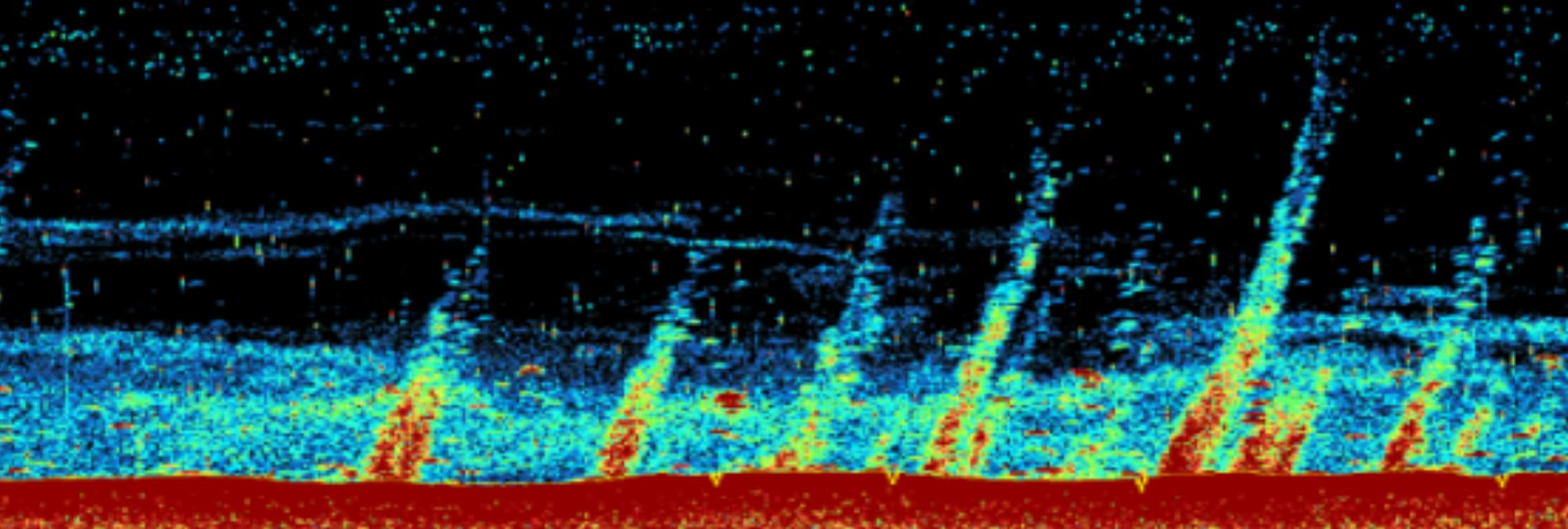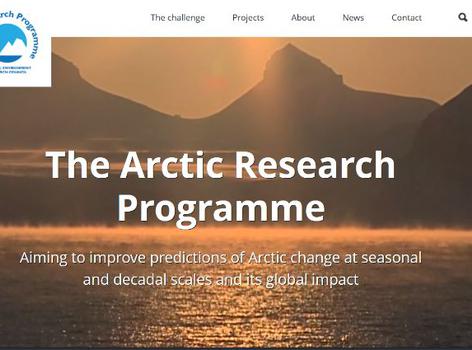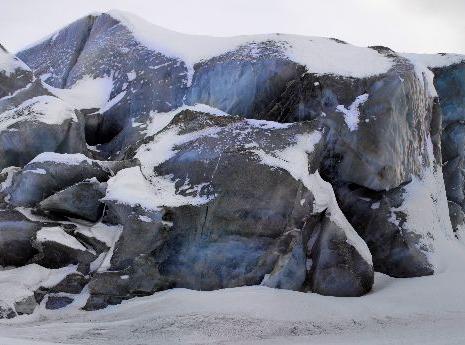Arctic methane hydrates and climate change
Along the western margin of Spitsbergen, where the northern extension of Gulf Stream system conveys warm Atlantic water into the Arctic Ocean, hundreds of plumes of bubbles of methane gas were discovered in 2008, rising from the seabed at a depth close to that of the landward limit of the methane hydrate stability zone.
Methane hydrate is a solid with the appearance of ice, in which water forms a cage-like structure enclosing molecules of methane. Methane hydrate is stable under conditions of low temperature and high pressure such as those found in regions of permafrost or under the ocean in water deeper than 300-600 metres, depending on the water temperature.
Over the past thirty years, the ocean's temperature at the seabed has increased by 1 degree C, causing the zone in which hydrate is stable to contract down the continental slope, with the apparent consequence that hydrate has broken down and released methane, which has migrated to the seabed and into the ocean.
Methane Hydrates
Investigating and modelling how ocean warming can affect the stability of methane hydrates in Arctic Ocean sediments, causing hydrates to thaw and the greenhouse gas methane to be released into the surrounding seawater and the atmosphere.
Spitsbergen, Norway
View our interactive mapAt present, the rate of release of methane is generally too slow to overcome dissolution and oxidation in the ocean to reach the atmosphere, except in very small quantities. However, catastrophic gas venting, which is known to occur elsewhere, could release large amounts of methane over a short period of time.
The strength of such venting depends upon the how much gas is stored locally beneath the seabed and the means by which gas is brought to the seabed from the sub-surface. The research project seeks to define these pathways and to quantify the amount of gas.
Two areas will be investigated, the region of the landward limit of the methane hydrate stability zone, where many bubble plumes occur in water shallower than 400 metres, and, for comparison, a pockmark in the Vestnesa Ridge, at a depth of 1200 metres, from which gas is escaping and is underlain by 'chimneys' that convey gas to the seabed through the hydrate stability zone, where the gas would normally form hydrate.
The project is providing the sub-seabed context for a seabed observatory (MASOX Monitoring Arctic Seafloor - Ocean Exchange), which was established in the shallow plume area in summer 2010 by a European scientific consortium to monitor the activity of the plumes and the physical and chemical fluxes through the seabed.
For more information on the group's webpage click here.

Professor Tim Minshull, Lead Investigator
Tim Minshull is the head of the Ocean and Earth Science School of the University of Southampton and works within the National Oceanography Centre in Southampton.
He has a background of geophysics from the Universities of Durham and Cambridge and has twice been awarded Royal Society University Research Fellowships at Cambridge and Southampton.
Tim’s current research interests are in extension of the continental lithosphere, active island arc volcanism and, particularly in the context of the Arctic Research Programme, methane hydrates. His recent hydrate research has focused on the hydrate system west of Svalbard, where the hydrate stability field is being thermally eroded by changes in ocean temperature. He leads a NERC-funded project (2011-2014) that has funded two cruises: one using high-resolution seismic techniques to image gas escape pathways and the other using controlled source electromagnetic techniques to quantify the amounts of hydrate and gas present. Tim also has been awarded one of the small projects funded by DECC (through NERC) to model the evolution of the hydrate stability field into the future in the Svalbard region.
View other team members





